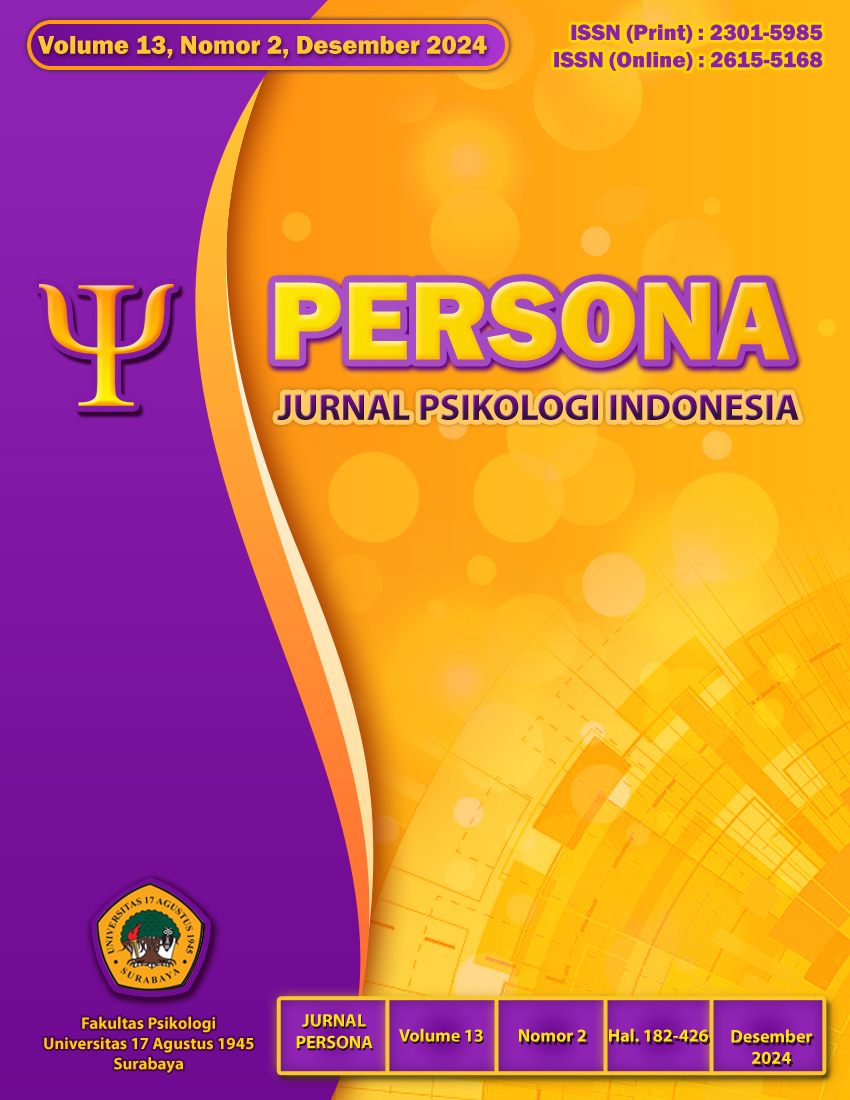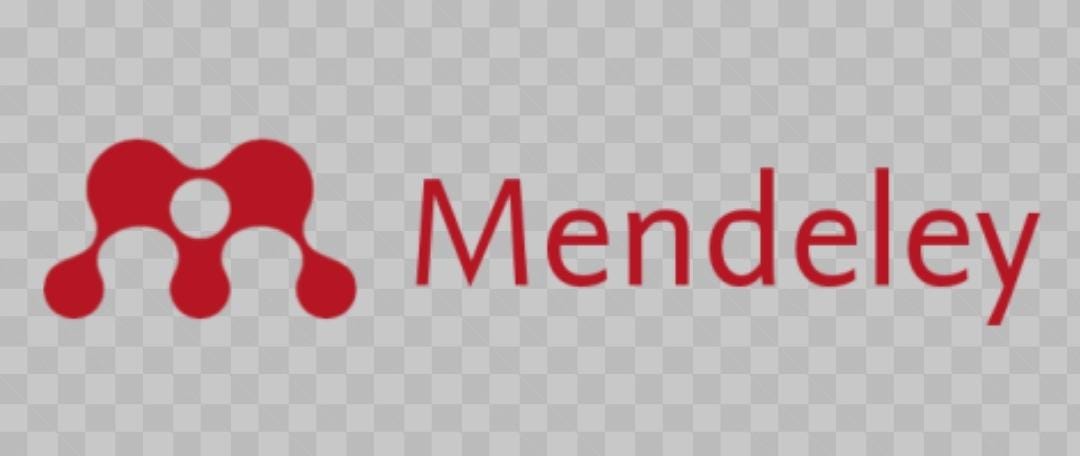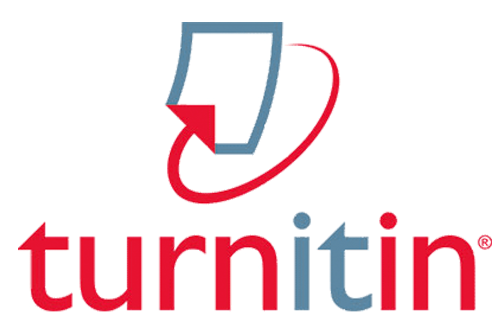Efikasi diri dan kemampuan berpikir kritis mahasiswa: Regulasi diri dan motivasi akademik sebagai mediator
Students' self-efficacy and critical thinking skills: Self-regulation and academic motivation as mediators
Abstract
The low critical thinking skills of students in Indonesia are a serious problem, characterized by minimal active participation in discussions, lack of analytical skills, and low learning motivation. This study aimed to analyze self-efficacy's role in shaping students' critical thinking skills through self-regulation and academic motivation as mediators. This study involved 384 randomly recruited from 63,556 students at one of the universities in Madura. The research instruments used were the critical thinking scale (α = 0.85), self-regulation scale (α = 0.82), academic motivation scale (α = 0.86), and self-efficacy scale (α = 0.88). All scales have met psychometric requirements and have been validated using Confirmatory Factor Analysis (CFA). Data were analyzed using Structural Equation Modeling (SEM). The results showed that self-regulation and academic motivation positively affect self-efficacy, which then becomes a mediator in improving students' critical thinking skills. This study emphasizes the importance of a holistic approach in Higher Education to develop critical thinking skills by strengthening students' internal factors. Implications for further research will be discussed.
Downloads
References
Akçaoğlu, M., & Arsal, Z. (2022). The effect of multicultural education on preservice teachers' attitude and efficacy: Testing Bank's content integration dimension. International Journal of Progressive Education, 18(1), 1-15. https://doi.org/10.29329/ijpe.2022.423.1
Bandura, A. (1997). Self-Efficacy: The Exercise of Control. New York: W.H. Freeman.
Capa-Aydin, Y. (2013). Self-Regulation and Critical Thinking in College Students. Journal of Educational Psychology, 7, 105–122.
Celuch, K., Kisamore, J. L., & Mollen, M. (2010). Building the business case for critical thinking: A case study in business communication. Business Communication Quarterly, 73(3), 298-315. https://doi.org/10.1177/1080569910377208
Chen, B., & Lin, S. (2018). Self-Regulation Questionnaire for Adolescents: An Examination of Validity and Reliability. Educational and Psychological Measurement, 78(4), 1054–1075.
Chemers, M. M., Hu, L. T., & Garcia, B. F. (2001). Self-Efficacy and Academic Performance in College Students. Journal of Educational Psychology, 39, 55–69.
Çetin Semerci, 2011, The relationships between achievement focused motivation and critical thinking, African Journal of Business Management Vol. 5(15), pp. 6180-6185, 4 August, 2011
Dent, A. L., & Koenka, A. C. (2016). The influence of self-regulated learning on academic achievement: A meta-analytic review. Educational Psychology Review, 28(3), 425-474. https://doi.org/10.1007/s10648-015-9320-8
Dignath, C., & Buttner, G. (2008). Component model of self-regulated learning. Learning and Instruction, 18(6), 511-530. https://doi.org/10.1016/j.learninstruc.2008.06.009
Dweck, C. S. (1988). The Role of Self-Efficacy in Academic Achievement. Educational Psychologist, 23, 2–23.
Facione, P. A. (2000). The critical thinking community: Critical thinking: A statement of expert consensus for purposes of educational assessment and instruction. The Delphi Report. California Academic Press.
Garcia, T., & Pintrich, P. R. (1992). The Influence of Motivation on Critical Thinking and Learning. Learning and Individual Differences, 4, 25–45.
Gangoso Ester et al, 2022. Glioblastomas acquire myeloid-affiliated transcriptional programs via epigenetic immunoediting to elicit immune evasion. Cell. 2021 Apr 29;184(9):2454-2470.e26. doi: 10.1016/j.cell.2021.03.023. Epub 2021 Apr 14.
Gloudemans, H., Schalk, R., & Reynaert, W. (2013). Self-Efficacy and Its Mediating Role in Critical Thinking Development. Journal of Nursing Education, 45, 215–230.
Hair, J. F., Hult, G. T. M., Ringle, C., & Sarstedt, M. (2014). A Primer on Partial Least Squares Structural Equation Modeling (PLS-SEM). Sage Publications.
Kember, D., Leung, D. Y., Jones, A., Loke, A. Y., McKay, J., Sinclair, K., ... & Yeung, E. (2000). Development of a Questionnaire to Measure the Level of Reflective Thinking. Assessment & Evaluation in Higher Education, 25(4), 381-395.
Leung, K., & Kember, D. (2003). The Impact of Academic Motivation on Critical Thinking. Studies in Higher Education, 28, 200–220.
Linnenbrink, E. A., & Pintrich, P. R. (2003). The role of self-efficacy beliefs in student engagement and learning in the classroom. Reading & Writing Quarterly, 19(2), 119-137. https://doi.org/10.1080/10573560308223
Maddux, G. (2002). Major League Baseball Player Statistics: 2002 Season. Baseball-Reference. Diakses dari https://www.baseball-reference.com.
Norris, S. P., Yildirim, S., & Ozkahraman, S. (2011). Critical Thinking as a Cognitive Strategy in Education. Journal of Educational Psychology, 101, 1–16.
Nuryanti, T., Zubaidah, S., & Diantoro, M. (2018). Critical Thinking in Indonesian College Students. Asian Social Science Journal, 12, 78–92.
OECD, 2018, Hasil PISA Indonesia 2018: Akses Makin Meluas, Saatnya Tingkatkan Kualitas, 4 Desember 2019. https://www.kemdikbud.go.id/main/blog/2019/12/hasil-pisa-indonesia-2018-akses-makin-meluas-saatnya-tingkatkan-kualitas?utm_source=chatgpt.com
Perkins, D. N., Jay, E., & Tishman, S. (1993). Beyond abilities: A dispositional view of thinking. The Educational Psychologist, 28(1), 47-58. https://doi.org/10.1207/s15326985ep2801_6
Phan, H. P. (2010). The Role of Self-Regulation in Critical Thinking. Educational Research Review, 5, 18–34.
Pintrich, P. R., Smith, D. A. F., Garcia, T., & McKeachie, W. J. (1991). A Manual for the Use of the Motivated Strategies for Learning Questionnaire (MSLQ). National Center for Research to Improve Postsecondary Teaching and Learning. Diakses dari https://files.eric.ed.gov/fulltext/ED338122.pdf.
Priatna, A., & Usdiyana, D. (2020). Critical Thinking Skills in Higher Education: A Fundamental Competency. Indonesian Journal of Educational Research, 5, 192–205.
Sari, N. J., Awanita, I. M., & Irawan, I. K. A. (2020). Pola Porgram Berpikir Kritis (Critical Thinking) Dalam Ruang Belajar Mengajar Era Abad 21 (Studi Pada Pasraman Kota Tanggerang). Jurnal Pasupati, 7(1), 59-71. http://dx.doi.org/10.37428/pspt.v7i1.208
Sari, R., Sumarmi, S., Astina, I., Utomo, D., & Ridhwan, R. (2021). Increasing students critical thinking skills and learning motivation using inquiry mind map. International Journal of Emerging Technologies in Learning (iJET), 16(3), 4-19.
Syarif yunus, 2024. Teachers' Day Notes, An Educational Dystopia in Indonesia, kumparan.com. https://kumparan.com/syarif-yunus/catatan-hari-guru-sebuah-distopia-pendidikan-di-indonesia-23yu7XNkr5Q/full?utm_source=chatgpt.com
Semmerci, N. (2010). Motivation and Critical Thinking Skills. International Journal of Educational Studies, 32, 234–248.
Shaheen, N. (2016). International Students’ Critical Thinking–Related Problem Areas: UK University Teachers’ Perspectives. Journal of Research in International Education, 15(1), 18–31.
Susilawati, E., Samsudin, A., & Siahaan, P. (2019). Pengembangan Lembar Observasi Keterampilan Berpikir Kritis Peserta didik. Seminar Nasional Taman Siswa Bima, 1(1), 423–429.
The Learning Curve Report. (2014). Educational Quality and Rankings. Pearson Education.
Tseng, H. F., et., al., (2022). Effectiveness of mRNA-1273 against SARS-CoV-2 Omicron and Delta variants. Nature Medicine, 28(5), 1063-1071. https://doi.org/10.1038/s41591-022-01753-y
Usdiyana, D., Purniati, T., Yulianti, K., & Harningsih, E. (2009). Meningkatkan kemampuan berpikir logis siswa SMP melalui pembelajaran matematika realistik. Jurnal Pengajaran MIPA, 13(1), 1–14.
van Dinther, M., Dochy, F., & Segers, M. (2011). Factors Influencing Self-Efficacy in Higher Education. Research in Higher Education, 52, 345–361.
Vallerand, R. J., Pelletier, L. G., Blais, M. R., Brière, N. M., Senécal, C., & Vallières, É. F. (1992). The Academic Motivation Scale: A Measure of Intrinsic, Extrinsic, and Amotivation in Education. Educational and Psychological Measurement, 52(4), 1003-1017.
Valenzuela, J., Nieto, A., & Saiz, C. (2011). Critical thinking motivational scale: A contribution to the study of relationship between critical thinking and motivation.
Wolters, C. A., & Taylor, D. J. (2012). Task value, goal orientation, and the development of self-regulated learning. Journal of Educational Psychology, 104(2), 395-409. https://doi.org/10.1037/a0026327
World Population Review. (2021). Education Rankings by Country 2021. Retrieved from https://worldpopulationreview.com/
Woodruff, S. L., & Cashman, J. F. (1993). Task, Domain, and General Efficacy: A Re-Examination of the Self-Efficacy Scale. Psychological Reports, 72(2), 563–570.
Zimmerman, B. J. (2000). Self-Regulation and Academic Learning: Theory, Research, and Practice. Mahwah, NJ: Lawrence Erlbaum Associates.
Zimmerman, B. J. (2002). Becoming a self-regulated learner: An overview. Theory into Practice, 41(2), 64-70. https://doi.org/10.1207/s15430421tip4102_2
Zubaidah, S. (2019). Memberdayakan Keterampilan Abad Ke-21 Melalui Pembelajaran Berbasis Proyek. Seminar Nasional. FMIPA Universitas Negeri Malang.
Yildirim, B & Ozkahraman, S. (2011). Critical Thinking in Nursing Process and Education. International Journal of Humanities and Social Science. Vol.1, No 13, Hal 257-262.
Yulianti, L. 2013. Efektivitas Bahan Ajar IPA Terpadu terhadap Kemampuan Berpikir Tingkat Tinggi Siswa SMP. Journal Pendidikan Fisika Indonesia, 9(1), 55-57. DOI:http://dx.doi.org/10.152
Copyright (c) 2024 Evi Febriani, Budi Eko Soetjipto, Nur Eva, Hetti Rahmawati

This work is licensed under a Creative Commons Attribution-ShareAlike 4.0 International License.
The author who will publish the manuscript at Persona: Jurnal Psikologi Indonesia, agree to the following terms:
1. Authors retain copyright and grant the journal right of first publication with the work simultaneously licensed under a Creative Commons Attribution ShareAlike License that allows others to share the work with an acknowledgment of the work's authorship and initial publication in this journal.
2. Authors are able to enter into separate, additional contractual arrangements for the non-exclusive distribution of the journal's published version of the work (e.g., post it to an institutional repository or publish it in a book), with an acknowledgment of its initial publication in this journal.
3. Authors are permitted and encouraged to post their work online (e.g., in institutional repositories, pre-prints sites or on their website) prior to and during the submission process, as it can lead to productive exchanges, as well as earlier and greater dissemination of published work








